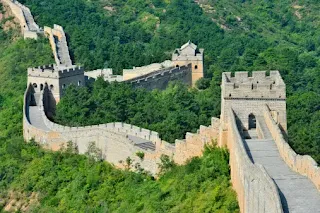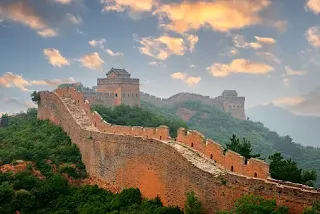The Great Wall of China stands as a testament to human ingenuity, endurance, and determination. Stretching over 13,000 miles, this architectural marvel winds its way through China's northern landscape, captivating the imagination of people worldwide. Beyond its physical grandeur, the Great Wall holds within its ancient stones a rich tapestry of history, culture, and heritage that continues to awe and inspire.
A Monument of History
Constructed over centuries, with its earliest sections dating back to the 7th century BC, the Great Wall is not just a single structure but a series of walls, fortifications, and trenches built by various dynasties. Its primary purpose was defense, serving to repel invasions from nomadic tribes to the north. Contrary to popular belief, the Great Wall is not visible from space without aid, but its historical significance is certainly monumental.
Architectural Marvel
The construction of the Great Wall utilized a variety of materials, including stone, brick, wood, and compacted earth. The design incorporated strategic elements such as watchtowers, beacon towers, and fortresses, providing both defensive capabilities and communication systems. The ingenuity of its architects is evident in the Wall's ability to navigate the rugged terrain, following the contours of mountains and valleys with remarkable precision.
Cultural Symbolism
Beyond its military function, the Great Wall holds immense cultural significance for the Chinese people. It symbolizes unity, strength, and resilience, embodying the spirit of perseverance ingrained in the nation's collective consciousness. The Wall has been a source of inspiration for poets, artists, and philosophers throughout history, immortalized in countless works of literature, art, and folklore.
Tourist Destination
Today, the Great Wall of China stands as one of the world's most iconic tourist attractions, drawing millions of visitors each year. Travelers from across the globe flock to witness its majesty, explore its ancient pathways, and soak in the breathtaking vistas of the surrounding landscape. Popular sections such as Badaling and Mutianyu offer accessible viewpoints and well-preserved fortifications, while more remote stretches provide a glimpse into the Wall's rugged, untamed beauty.
Preservation Efforts
Despite its enduring legacy, the Great Wall faces numerous challenges, including erosion, vandalism, and encroaching development. Preservation efforts by the Chinese government and various organizations seek to protect and restore this cultural treasure for future generations. Through initiatives such as conservation projects, educational programs, and sustainable tourism practices, efforts are underway to ensure that the Great Wall remains intact for centuries to come.
Legacy for the Future
As a symbol of human achievement, the Great Wall of China transcends its historical context, serving as a beacon of hope and inspiration for generations to come. Its towering ramparts stand as a reminder of mankind's ability to overcome adversity, adapt to challenges, and leave a lasting legacy for future civilizations. Whether viewed as a testament to ancient engineering or a cultural icon of global significance, the Great Wall continues to captivate the hearts and minds of people around the world, inviting us to marvel at the wonders of the past and contemplate the possibilities of the future.








